11 great exercises for building bigger biceps
- Overview
- The best way to train biceps
- How often should I train biceps?
- Dumbbell curls for bigger biceps
- Barbell curls for bigger biceps
- Empty barbell curls for bigger biceps
- Cable preacher curls for bigger biceps
- Lying incline death curls for bigger biceps
- One arm cable curls for bigger biceps
- Incline bench curls for bigger biceps
- Hammer curls for bigger biceps
- Machine bicep curls for bigger biceps
- Concentrated curls for bigger biceps
- One arm preacher curls for bigger biceps
- Related articles
To save you time and effort, we’ve put all the best exercises for building bigger biceps in one place. For optimal results, incorporate your favourite bicep exercises into your wider fitness routine.
The best way to train biceps
The best exercise for growing the bicep muscle is any variation of the curl. Curls are best done using a barbell and weights or a set of dumbbells.
If you’re training in the gym, sitting at a bench or using the preacher curl machine can help to further concentrate tension on the bicep muscle, leading to bigger gains.
The science of bicep growth
Muscle growth occurs when tension, stress, or resistance is applied to the fibres in a muscle. This process is called hypertrophy. When you lift a weight, micro-tears develop in the fibres of the muscle you’re working. During rest and recovery, your body repairs these torn fibres, building them back bigger and stronger.
Progressive overload and why it’s important
The addition of more and more weight over time is known as progressive overload. This process is essential for optimal muscle growth. In practice, this simply means lifting heavier weight over time as you get stronger.
Progressive overload ensures your muscles don’t get accustomed to lifting weights that they can easily handle. Proper nutrition, particularly protein intake, and sufficient rest and recovery also aid with this muscle growth process.
The value of working with a personal trainer
If you already know what exercises work for you, then jump right in. If you don’t, working with a personal trainer is a great way to assess your ability and goals to create a unique workout that’s specifically for you.
If you’re injured or living with chronic pain, visiting a physiotherapist before you start any new routine is a must. A qualified physio can help diagnose issues and provide recommendations about posture, form, and how to exercise without aggravating your body.
- Unsure about personal training? Click here to find out what’s involved
Building bigger biceps at home
If you don’t have access to gym machines, don’t fret. If you’re training biceps at home, we recommend getting a barbell and a set of weights or a set of dumbbells that you can curl.
If you don’t have access to any of this equipment, you can use weighted material like a bag of sugar or a weighty book to start. Resistance bands are another effective and versatile way of training your biceps. Most packs come with a selection of bands of varying strengths to promote gradual progressive overload.
How often should I train biceps?
Whilst there are no hard and fast rules about how often you train a muscle group, you should consider your overall fitness, weightlifting ability, recovery capacity, and your goals when putting together a workout plan.
The bicep is a muscle that is easy to activate. If you’re new to weightlifting, you may find this ease of activation means your biceps require additional recovery time in comparison to other muscle groups.
For optimal results when starting out, consider training your biceps no more than twice a week. Two sessions a week gives your muscles enough post-workout recovery to perform at their maximum capacity during the next session.
Can I train biceps every day?
Training your biceps every day will put a great deal of stress and strain on the muscle and may mean you reach “failure” quicker than you should.
Failure occurs when a muscle can no longer contract concentrically. Overworking a single muscle can have great results, but for beginners and those not seeking maximum athletic performance, training a specific muscle every day is not a balanced and sustainable way of building muscle over time.
- Concerned about overtraining? Click here to learn more about rest and recovery
Dumbbell curls for bigger biceps
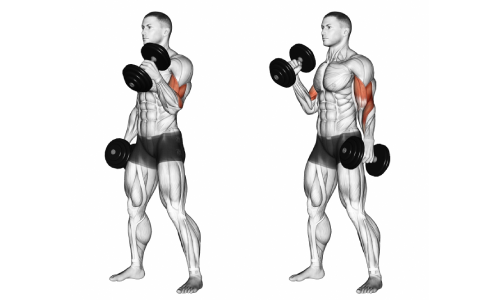
Take a dumbbell in each hand and fully extend each arm down at your side. Raise and curl one dumbbell at a time, keeping your upper arms stationary. Exhale as you lift and focus on squeezing your bicep at the top of the lift.
Start with a weight that feels easy and focus on your form before increasing the difficulty.
- Difficulty: beginner
- Equipment: dumbbells
- Targeted area: short and long bicep head
- Benefits: accessible isolation of the bicep for balanced development and overall growth.
Barbell curls for bigger biceps
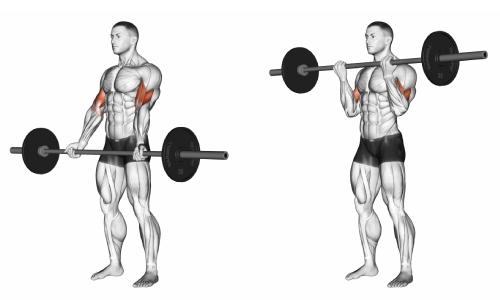
A classic mass builder for the biceps. Stand with the barbell shoulder-width apart and focus on keeping your upper arm stationary.
Curl the bar and squeeze the bicep at the top of the lift.
- Difficulty: beginner
- Equipment: barbell
- Targeted area: short and long bicep head
- Benefits: allows heavy lifting and progressive overload.
Empty barbell curls for bigger biceps
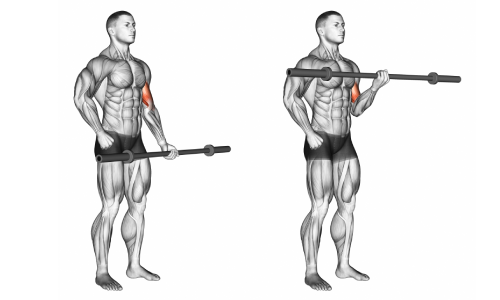
The form required for empty barbell curls is identical to the traditional barbell curls.
Take an unloaded and use the same form and technique.
- Difficulty: beginner
- Equipment: empty barbell
- Targeted area: short and long bicep head
- Benefits: ideal for beginners to practice form before adding weight. Promotes muscle memory and a higher degree of control
Cable preacher curls for bigger biceps
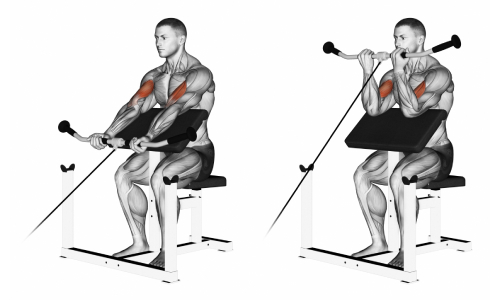
Sit at a preacher bench with your upper arms on the pad.
Grasp a cable bar with an underhand grip and curl the bar up and towards your chest.
- Difficulty: intermediate
- Equipment: cable machine with preacher bench attachment
- Targeted area: long bicep head
- Benefits: uses constant tension to isolate the long head for peak development
Lying incline death curls for bigger biceps
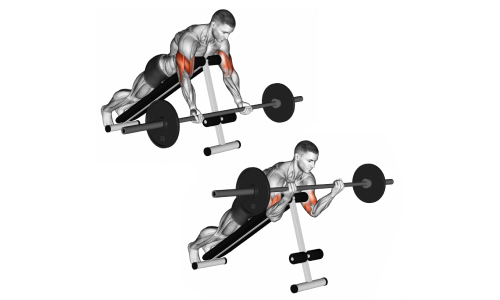
Lie face down on an incline bench with your arms hanging straight down on either side.
Reach and lift the barbell, curling it upwards to squeeze the bicep, paying special attention to keeping your upper arms stationary.
Incline death curls limit momentum swings and prevent your upper body from negatively impacting your form.
- Difficulty: advanced
- Equipment: barbell and incline bench
- Targeted area: long bicep head
- Benefits: stretches and focuses activation on the long bicep head.
One arm cable curls for bigger biceps
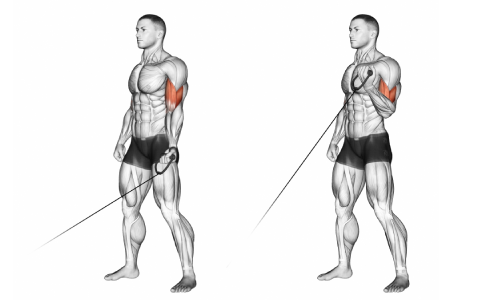
Using the static cable machine, stand with your legs and shoulders width apart.
Take and hold a handle with one hand, and curl it upwards, making sure your elbow is tucked in close to your side and your feet are firmly planted to reinforce proper form.
- Difficulty: intermediate
- Equipment: cable machine and handle attachment
- Targeted area: the short bicep head
- Benefits: unilateral training promotes balanced development. Constant tension throughout the arm aids with control during the movement.
Incline bench curls for bigger biceps
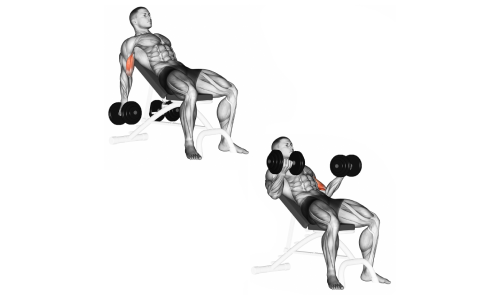
Sit on an incline bench and use the resting platform to support your back.
Take a dumbbell in either hand and curl them up towards your shoulders, squeezing the bicep at the top of the movement.
- Difficulty: beginner
- Equipment: dumbbells or a barbell and an incline bench
- Targeted area: both the short and long bicep head
- Benefits: Stretches the biceps and engages them at different angles for overall growth.
Hammer curls for bigger biceps
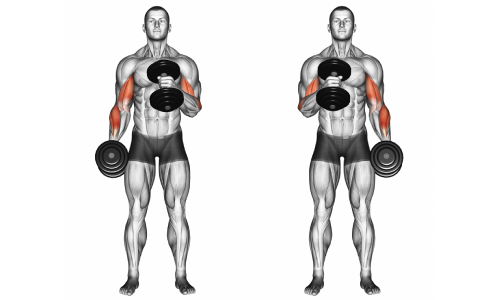
Stand with your feet shoulder width apart and take a dumbbell in either hand. Your grip should see your palms facing inward toward the body.
With your arms relaxed at your sides, curl the weights upward and inwards, so the peak of the movement sees the dumbbell resting in front of your chest.
- Difficulty: beginner
- Equipment: dumbbells
- Targeted area: the brachialis muscle
- Benefits: hammer curls strengthen the brachialis and contribute to overall arm thickness. They’re great for developing the muscles in the forearm too.
Machine bicep curls for bigger biceps
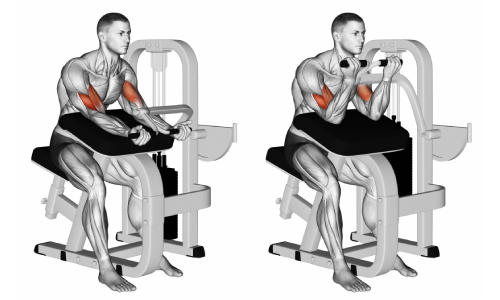
Using the preacher curl machine, sit in a comfortable position with your elbows against the padded platform.
If it’s your first time using the machine, choose a weight that’s manageable. Grasp the handles and curl the weight whilst focusing on keeping your upper arms in a stable position.
- Difficulty: intermediate
- Equipment: preacher curl machine
- Targeted area: both the short and long bicep head
- Benefits: provides controlled resistance for beginners. Reduces the risk of cheating and injury.
Concentrated curls for bigger biceps
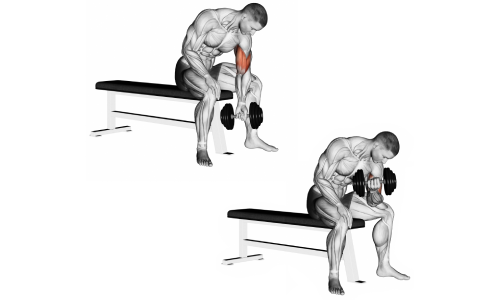
Find a bench or a similar sturdy seated station and rest your elbow against your thigh using the image on the right as a guide.
Curl the dumbbell upwards towards your head, releasing and lowering it between your legs. For better form, focus on keeping your elbow in place against your thigh.
- Difficulty: beginner
- Equipment: weighted dumbbell and bench
- Targeted area: the short bicep head
- Benefits: concentrated bicep curls are a great way to isolate the bicep and apply extra tension to promote optimal muscle growth.
One arm preacher curls for bigger biceps
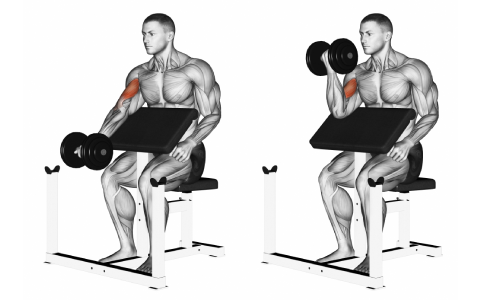
One arm preacher curls can be performed with a preacher curl machine (halve the weight you’d use for a two handed curl) or an empty breacher bench.
Rest your elbow against the platform and lift the dumbbell with an underhand grip. Extend your arm downward until the arm is straight and curl it back upward towards the body until you feel the bicep muscle squeeze.
- Difficulty: intermediate
- Equipment: preacher bench and dumbbell
- Targeted area: both the short and long bicep head
- Benefits: isolates each arm for balanced development and reduces the risk of strength imbalances.
Last updated Thursday 24 October 2024
First published on Wednesday 4 October 2023
